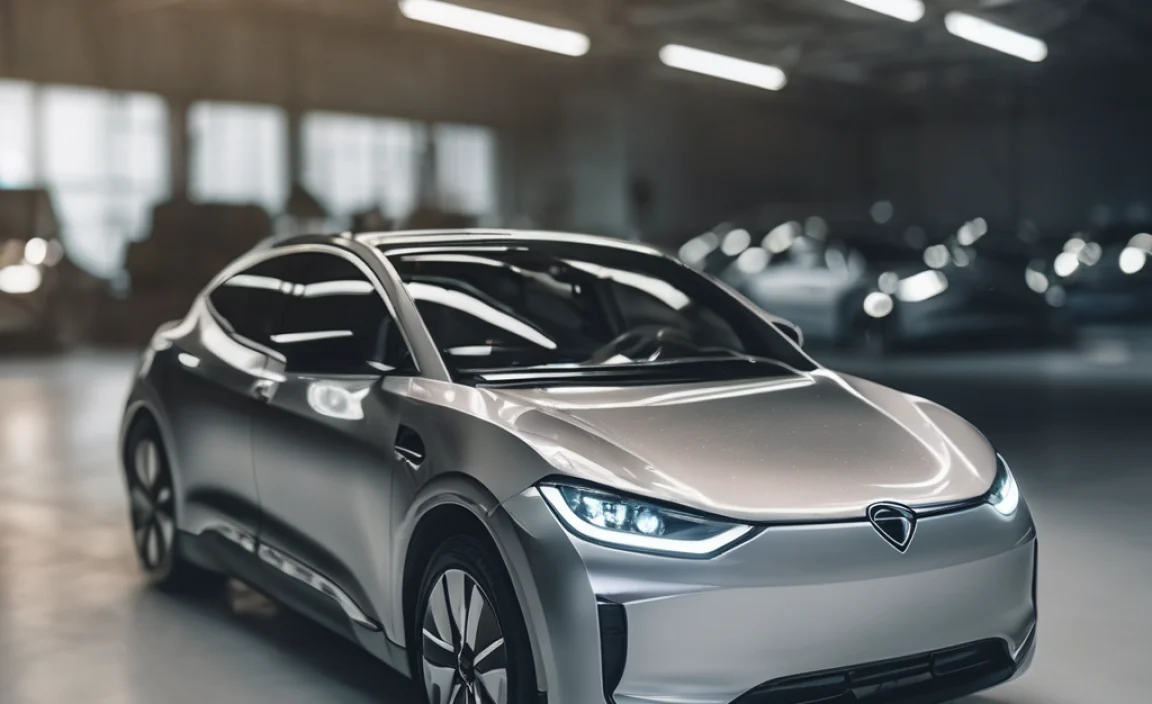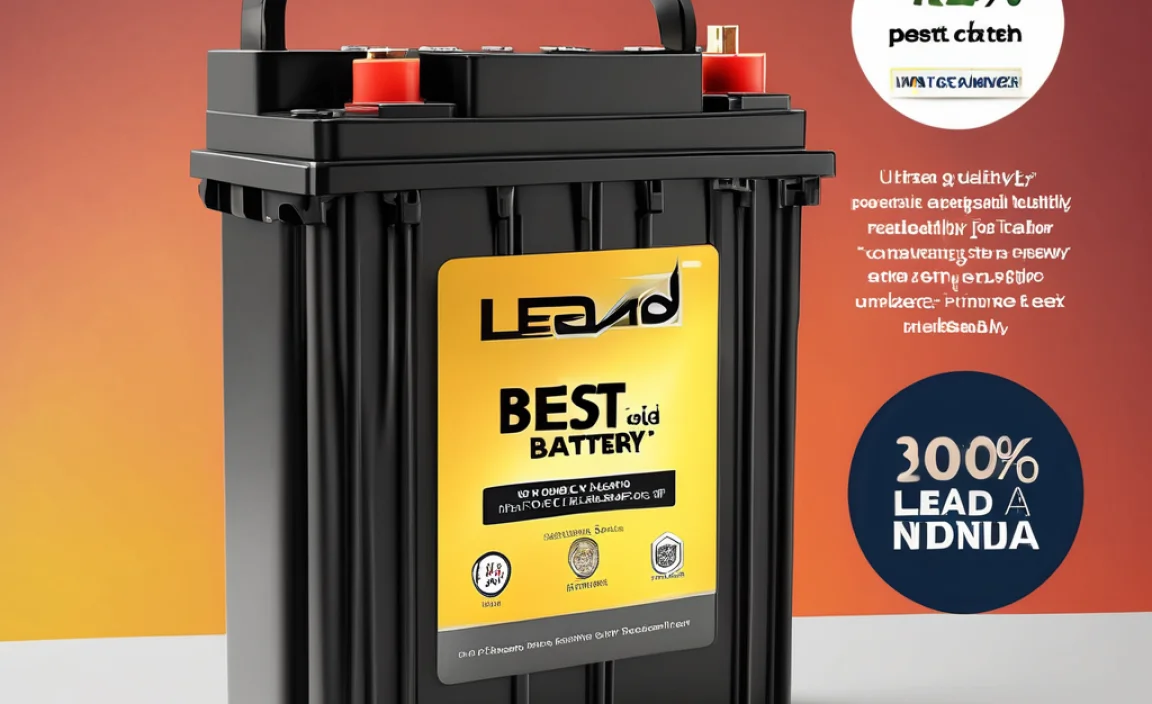Quick Summary:
An adapter for your hoverboard is a charger designed to replenish its battery. A compatible adapter ensures safe, efficient charging, preventing damage to the hoverboard and its battery. Finding the right one is crucial for keeping your hoverboard powered up and ready for fun.
Hoverboards are incredibly fun, but a dead battery can quickly put a damper on your excitement. The heart of getting your hoverboard back on track is its charger, often referred to as the adapter. It looks like a simple plug, but using the wrong one can actually harm your hoverboard. Don’t worry, though! It’s not as complicated as it sounds. We’re here to walk you through exactly what you need to know about finding and using the right adapter for your hoverboard, making sure your rides are long and your hoverboard stays happy. Get ready to power up with confidence!
Understanding Your Hoverboard Adapter
Think of the adapter for your hoverboard like the specific charger you use for your phone. Just like your phone needs its own cable and power brick, your hoverboard needs a specialized charger to get its power. This adapter is responsible for converting the electricity from your wall outlet into a form that your hoverboard’s battery can safely use.
Why is it so important to get the right adapter? Well, hoverboards have specific voltage and amperage requirements for their batteries. Using an adapter that doesn’t meet these needs can cause a few problems. Too much power can fry your battery or internal components, while too little might mean it never charges fully and could even damage the battery long-term by overworking it. The goal is to get an adapter that perfectly matches what your hoverboard manufacturer designed.
What Does a Hoverboard Adapter Look Like?
Most hoverboard adapters are brick-shaped power supplies with a cord that plugs into the wall and another cord that connects to your hoverboard. The connector that plugs into the hoverboard is usually a small, round, three-pin connector, though some models might have slightly different designs. You’ll also find a light-up indicator on the adapter itself, often changing color from red (charging) to green (fully charged).
This indicator light is your best friend when charging. It tells you exactly what’s happening with the power flow. Red means business – the battery is taking in power. Green signifies that the job is done. It’s a simple visual cue that helps you avoid overcharging or unplugging too soon.
The Importance of the Right Voltage and Amperage
This is where things can sound a bit technical, but I’ll break it down simply. Voltage (V) is like the “pressure” of the electricity, and amperage (A) is like the “flow rate.” Your hoverboard’s battery has a specific “sweet spot” for both. The adapter’s job is to deliver the correct voltage and amperage to hit that sweet spot.
- Voltage (V): This is the electrical potential difference, often set by the battery’s design. Most hoverboard batteries are 36V, but checking your specific model is key.
- Amperage (A) or Current: This is how much electrical charge flows per unit of time. The adapter should provide an amperage that matches or is slightly higher than what the hoverboard expects for charging.
Using an adapter with a voltage that’s too high can cause irreversible damage. If the amperage is too low, charging will take forever, or it might not even charge effectively. If it’s too high, it can overheat and damage the battery. Always aim for an adapter that is engineered specifically for your hoverboard model or one with identical specifications.
Why You Might Need a New Adapter
Life happens, and sometimes your hoverboard adapter can become the weak link. There are a few common reasons why you might find yourself hunting for a replacement:
- Wear and Tear: Like any electronic accessory, adapters can wear out over time. The cords can fray, the plug might become loose, or the internal components can simply fail after extensive use.
- Accidental Damage: Maybe the adapter was dropped, stepped on, or had liquid spill near it. These accidents can quickly render an adapter useless or, worse, unsafe.
- Loss or Theft: It’s easy to misplace an adapter, especially if you have a lot of electronics around the house. If it goes missing, you’ll need a new one to keep your hoverboard charged.
- Moving On to a New Hoverboard: If you upgrade your hoverboard, the old charger might not be compatible with your new model.
It’s also worth noting that sometimes, a malfunctioning adapter isn’t immediately obvious. If your hoverboard isn’t charging as quickly as it used to, or if the charging indicator light flickers or doesn’t come on at all, the adapter might be the culprit. Before you jump to Conclusions about the hoverboard battery itself, always check the adapter first.
How to Find the Right Adapter for Your Hoverboard
Finding the correct hoverboard adapter might seem daunting, but it’s a straightforward process if you know what to look for. The goal is to match the specifications of your original charger or the requirements of your hoverboard.
1. Check Your Hoverboard’s Manual or Original Charger
This is your golden ticket! Your hoverboard’s user manual is the absolute best place to find the precise specifications for the charger (adapter). Look for a section on charging or power. If you still have the original adapter, flip it over. Usually, the important details are printed right on the adapter itself or on a small label.
You’re looking for key information like:
- Input Voltage: This tells you what the adapter needs from the wall (e.g., 100-240V AC).
- Output Voltage (V): This is what the adapter supplies to your hoverboard (e.g., 42V, 36V).
- Output Current (A) or Amperage: This is the rate of charge (e.g., 1A, 2A).
- Output Wattage (W) (sometimes provided): This is Voltage x Amperage.
- Connector Type: The shape and size of the plug that goes into the hoverboard.
2. Identify Your Hoverboard Model
If you can’t find your manual or the original adapter label, the next best step is to identify your hoverboard’s exact make and model. This information is often printed on the bottom of the hoverboard itself, sometimes on a sticker with a serial number.
Once you have the model name (e.g., “Swagtron T1,” “Halo Rover,” “Razor Hovertrax”), you can:
- Search the Manufacturer’s Website: Go directly to the website of your hoverboard brand. They often have support sections where you can find replacement parts or specifications.
- Online Retailers: Search on popular online shopping sites using your hoverboard model name and “charger” or “adapter.” Be very careful to read product descriptions and reviews to ensure compatibility.
3. Match the Specifications Carefully
When you find a potential replacement adapter, compare its specifications to your original ones. Here’s what’s most critical:
- Output Voltage (V): MUST MATCH EXACTLY. A mismatch here is the quickest way to damage your hoverboard.
- Connector Type: MUST MATCH EXACTLY. If the plug doesn’t fit, it’s useless.
- Output Current (A): It’s generally okay if the replacement adapter’s amperage is slightly higher than the original, as the hoverboard only draws what it needs. However, it should never be lower.
- Input Voltage: Most adapters sold internationally support a wide range (100-240V AC), which is what you want for flexibility.
Here’s a quick comparison table that might help:
| Specification | Critical Match? | What to Look For |
|---|---|---|
| Output Voltage (V) | YES | Must be the same as original (e.g., 42V) |
| Output Current (A) | NO (but higher is usually okay) | Same or higher than original (e.g., 2A) |
| Connector Type | YES | Must physically fit your hoverboard’s charging port |
| Input Voltage (AC) | NO (ideally universal) | 100-240V AC is best for most countries |
Remember, when in doubt, err on the side of caution. It’s better to wait for the perfectly matched adapter than to risk damaging your hoverboard with an incorrect one.
Where to Buy a Hoverboard Adapter
Once you know what you need, you’ll want to know where to find one. There are several reliable places to purchase an adapter for your hoverboard:
- Manufacturer’s Official Website: This is often the safest bet. Buying directly from the hoverboard brand ensures you’re getting a genuine part designed specifically for your model.
- Reputable Online Retailers (Amazon, eBay, etc.): These platforms offer a vast selection, often at competitive prices. However, be vigilant. Stick to sellers with high ratings and positive reviews. Always double-check the product details and seller information.
- Specialty Electronics Stores: Some brick-and-mortar or online stores that focus on mobile accessories, chargers, or power solutions might carry compatible adapters.
- Third-Party Accessory Websites: Many websites specialize in replacement parts for various electronic devices. Again, check reviews and return policies carefully.
When buying online, always:
- Read the full product description.
- Check customer reviews for comments on compatibility and reliability.
- Verify the return policy in case it doesn’t work.
- Look for mentions of compatible hoverboard models.
You might see adapters advertised as “universal hoverboard chargers.” Be very cautious with these unless they explicitly state compatibility with your specific voltage, amperage, and connector type. True universality is rare in these devices, and a mismatch can be costly.
How to Charge Your Hoverboard Safely
Charging your hoverboard properly is essential for its lifespan and your safety. It’s not just about plugging it in; there are a few best practices to follow.
Step-by-Step Charging Guide
Here’s a simple, step-by-step approach to charging your hoverboard:
- Find a Suitable Location: Choose a clean, dry, and well-ventilated area away from flammable materials. Avoid charging on soft surfaces like carpets or beds, as this can trap heat. A hard, flat surface like a tile floor or a table is ideal.
- Connect the Adapter to Power: Plug the wall adapter into a standard electrical outlet. Make sure the outlet itself is in good working order.
- Connect the Adapter to the Hoverboard: Take the connector end of the adapter and plug it firmly into the charging port on your hoverboard. It should slide in smoothly. You’ll often hear a click or feel it seat properly.
- Observe the Indicator Light: The adapter’s light will typically turn red, indicating that charging has begun. Your hoverboard might also have its own charging indicator.
- Allow Full Charge: Let the hoverboard charge undisturbed. This can take anywhere from 1.5 to 4 hours, depending on the hoverboard and battery level.
- Check the Indicator Light Again: When the hoverboard is fully charged, the adapter’s light will usually turn green. Some hoverboards also have lights that change color or turn off.
- Unplug Gradually: Once it’s fully charged, unplug the adapter from the hoverboard first, and then unplug it from the wall outlet.
Safety Precautions for Charging
Safety is paramount when dealing with batteries and electricity. Here are key precautions:
- Never Overcharge: While most modern adapters and hoverboards have built-in protection against overcharging, it’s still best practice to unplug the hoverboard once the indicator light turns green. Leaving it plugged in for extended periods (days) is not recommended.
- Use Only the Correct Adapter: As we’ve stressed, always use the adapter specified for your hoverboard. Using a universal charger or one with incorrect specifications is a major safety risk and can damage the device. Reputable sources for hoverboard safety guidelines, like those from the U.S. Consumer Product Safety Commission (CPSC), highlight the importance of using certified or manufacturer-approved charging equipment.
- Inspect the Adapter Regularly: Before and after each charge, visually inspect the adapter and its cords for any signs of damage, such as frayed wires, cracked insulation, or bent pins. If you see any damage, discontinue use immediately and get a replacement.
- Avoid Charging Near Water: Never charge your hoverboard in damp environments, such as bathrooms or near swimming pools. Water and electricity are a dangerous combination.
- Don’t Charge Under Direct Sunlight or Near Heat Sources: Batteries can be sensitive to extreme temperatures. Charging in a cool, room-temperature environment is best.
- Supervise Charging: It’s a good idea to be present, or at least in the vicinity, while your hoverboard is charging, especially for the first few times with a new adapter or hoverboard.
By following these simple steps and safety tips, you can ensure a smooth and safe charging experience every time, keeping your hoverboard ready for your next adventure.
Troubleshooting Common Adapter and Charging Issues
What do you do when your hoverboard isn’t charging, and you suspect the adapter might be the problem? Here are some common issues and how to tackle them:
Hoverboard Not Charging at All
If you plug in the adapter, and nothing happens – no lights on the adapter, no indication on the hoverboard – here’s your checklist:
- Check the Power Outlet: Is the outlet working? Try plugging in another device, like a lamp or phone charger, to confirm.
- Check the Wall Connection: Ensure the adapter is firmly plugged into the outlet.
- Check the Hoverboard Connection: Make sure the adapter’s connector is fully seated in the hoverboard’s charging port. Sometimes it just needs a firmer push.
- Inspect the Adapter and Cable: Look for any visible damage (fraying, cuts, bent pins on the connector). If damaged, the adapter needs replacement.
- Try a Different Outlet/Location: Rule out any issues with the power source itself.
- Test the Adapter (If Possible): If you have access to another hoverboard that uses the exact same adapter specifications, you could test it. Or, if you have a multimeter, you can check the output voltage, but this is for more advanced users.
Charging Light Won’t Turn Green
If the adapter light stays red, or never progresses to green, it could mean:
- The battery is severely depleted and needs a longer charge time than usual to start. Leave it plugged in for an hour or two and see if it progresses.
- The battery is faulty and can no longer hold a charge.
- The adapter is failing and not supplying the correct power to signal a full charge.
- The charging port on the hoverboard is dirty or damaged.
In this scenario, especially if the hoverboard is older, it might be time to consider replacing both the adapter and potentially looking into the battery pack. Consulting the manufacturer is a good next step.
Hoverboard Charges Very Slowly
A slow charge could indicate:
- Incorrect Amperage: The adapter might have a lower amperage than what the hoverboard ideally requires. While it will eventually charge, it will take much longer.
- Failing Adapter: The adapter’s internal components might be degrading, leading to less efficient power transfer.
- Battery Health: An older battery might not accept a charge as efficiently as a new one.
If charging times have suddenly increased dramatically, it’s worth investigating the adapter and the battery’s age.
Adapter Gets Unusually Hot
It’s normal for a charging adapter to get slightly warm during use, but if it becomes excessively hot to the touch, something is wrong:
- Faulty Adapter: The adapter might be defective, drawing too much power or having internal issues.
- Incorrect Specifications: Using an adapter with incorrect (often higher) amperage can cause it to overheat.
- Short Circuit: There could be an issue within the hoverboard’s charging circuitry or the battery itself causing a short.
If the adapter feels dangerously hot, unplug it immediately! Do not




